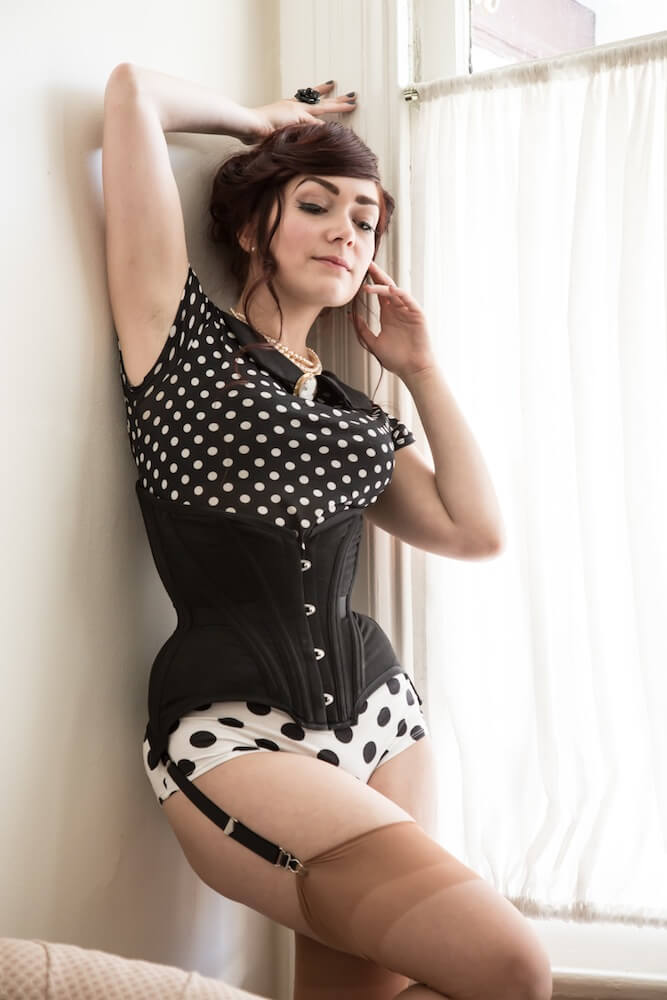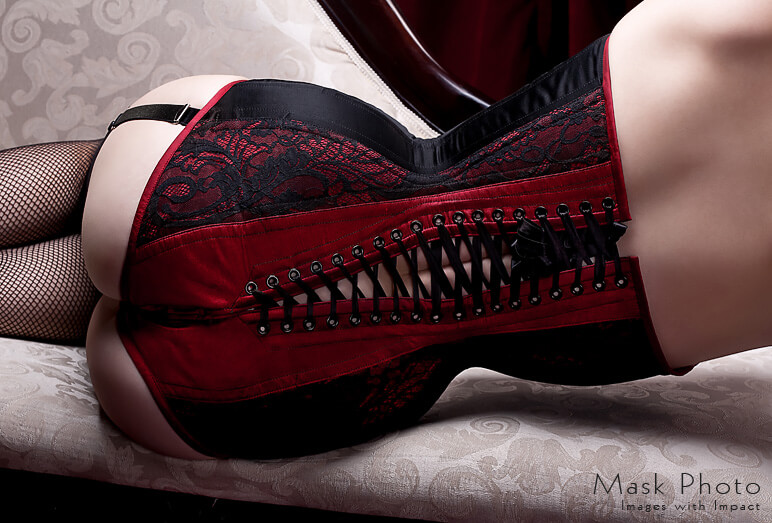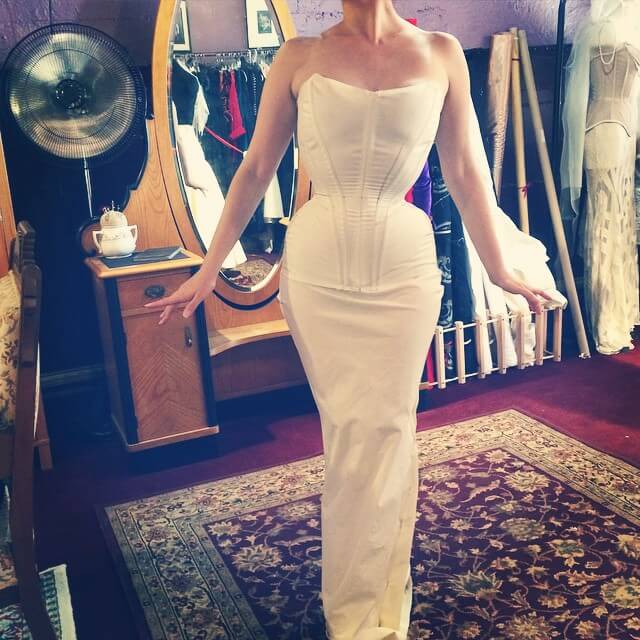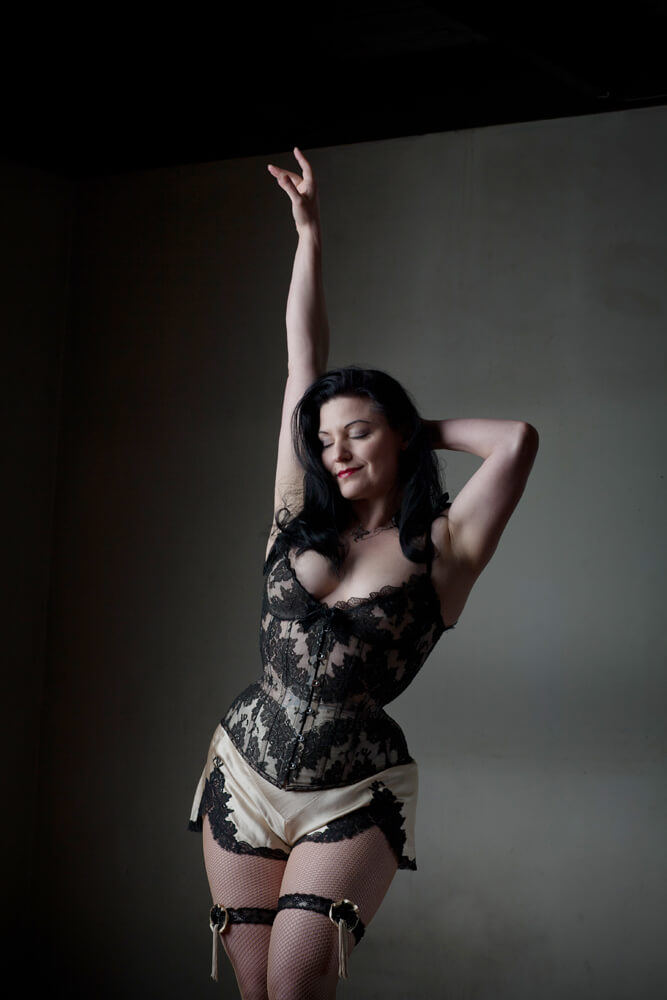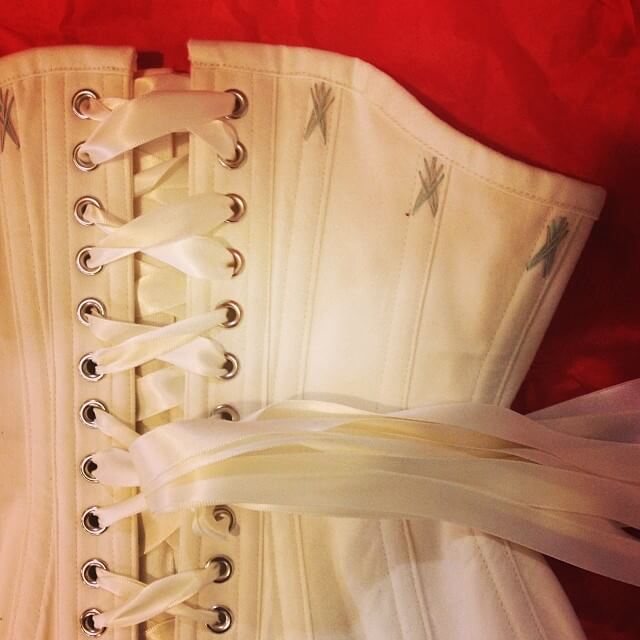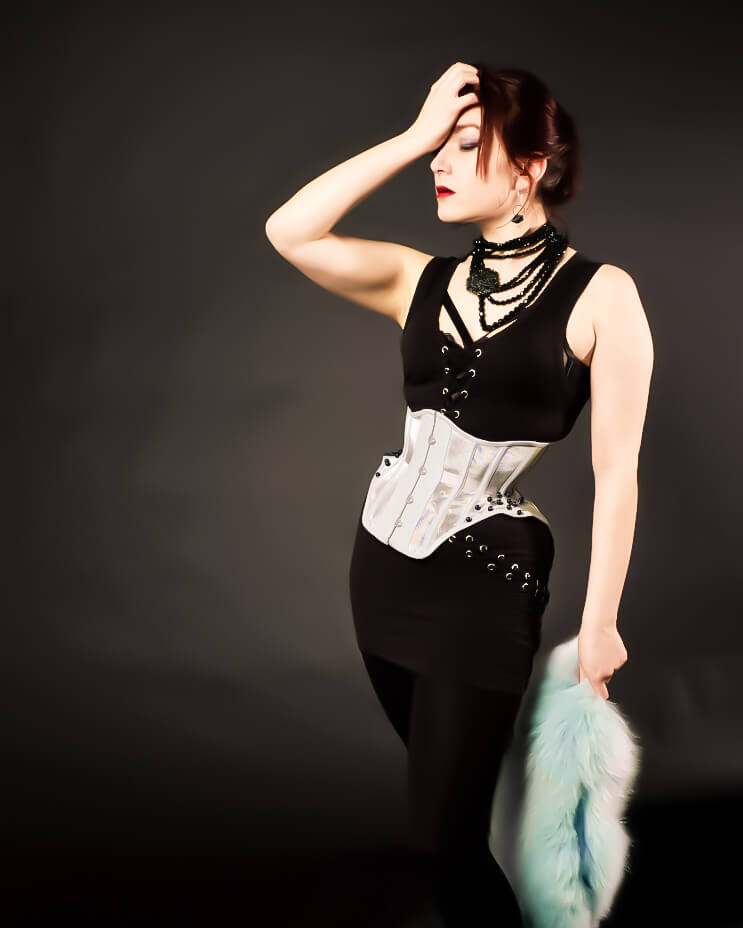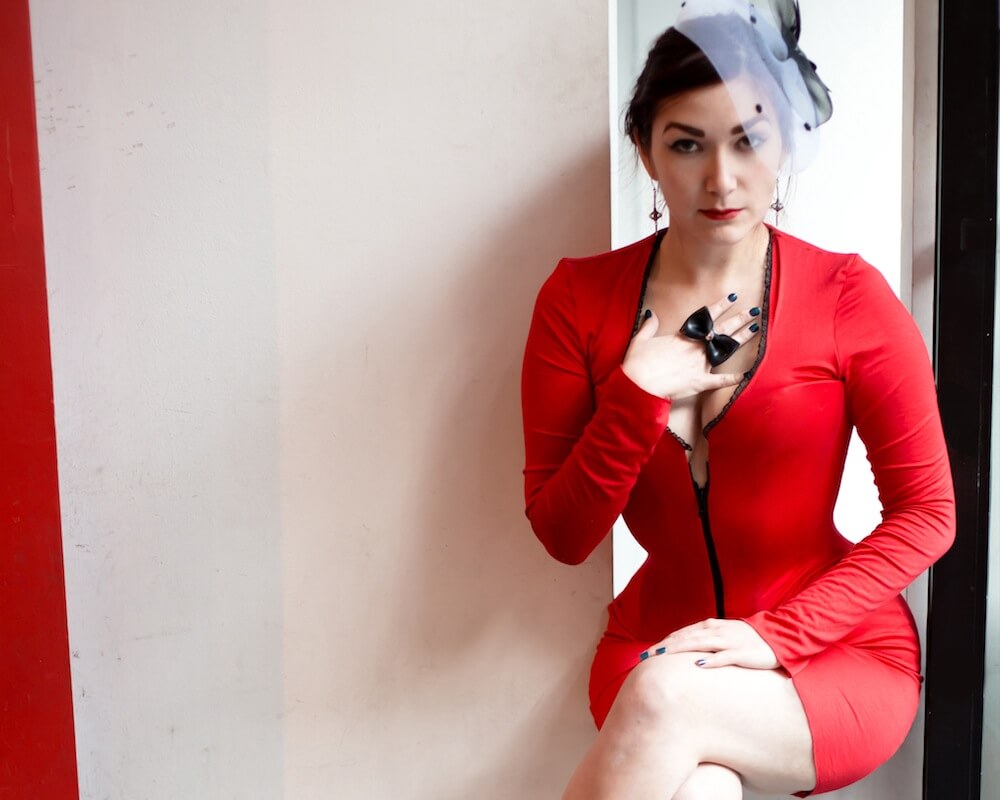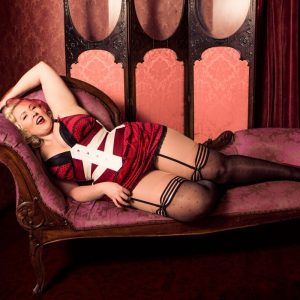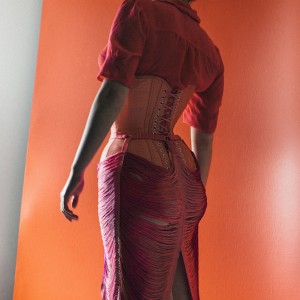How to Order a Custom Corset: A Step by Step Guide
In corsetry, custom, bespoke, and made-to-measure all mean essentially the same thing, just as ready-to-wear, off-the-rack, and made-to-order have similar or overlapping definitions, depending on the maker. Which means they should all follow a similar process, right? Unfortunately, that's not always the case. All too often, I hear sad tales of made-to-measure corsets that don't fit because an essential step was skipped. Here's what you should expect when ordering a custom corset, made to fit your body. (When and why you should spring for a custom will be a topic for another day.)
Made-to-Order vs. Custom Fit
First, let's talk about how custom corsets fit in with made-to-order/personalized corsets. A corset that is made to order is generally based on a standard size pattern, with your choice of fabric and detailing, and possible small tweaks to the fit (for example, an adjustment of length for your torso, increased hip spring, or a variant on the neckline shape). Even when the fit has been personalized, this type of corset is closer to off-the-rack than custom (/bespoke/made-to-measure), but is sometimes called semi-custom. Depending on the corsetiere, custom and ready-to-wear/MTO corsets may have different construction standards, including the number of panels. A custom corset should have a fit that is completely customized for your body. Some corsetieres only do custom and some only do ready-to-wear; some do both but specialize in one or the other.
Custom Design & Fit
A custom corset should always have a custom fit; additionally, it may also have a custom design not seen in that maker's ready-to-wear line. How this is handled will vary from maker to maker. At Dark Garden, there are separate sections in the line sheet for ready-to-wear and custom styles, and of course unique and hybrid custom styles beyond those listed are often ordered. Electra Designs' website lists made-to-measure prices for (almost) all of her standard styles, as does Pop Antique (my line). Sparklewren prefers to craft bespoke visions from scratch for each client. Also bear in mind that certain designs are only possible with a custom fit, such as stunning corset bodies.
Step 1: Measurements and Pattern
Creating a custom fit corset starts with complete and accurate measurements for each unique client. The number of measurements required will vary based on the particular maker's patterning process and the style of corset ordered. If you are being asked merely for a bust (and/or underbust), waist, and hip measurement, know that those dimensions aren't sufficient for a truly custom fit, though it could be considered semi-custom.
A variety of vertical measurements are also required at a minimum; additional measurements can also help your corsetiere cross-reference and confirm the most vital measurements. For example, knowing the client's height may validate or rule out an unlikely waist to lap measurement. Once measurements have been taken, the pattern is plotted out according to careful rules about ease (adding to the measurements) and negative ease (reduction) for each part of the body.
Step 2: Mock-Up
The mockup is arguably the most important step in this process. No matter how experienced your corsetiere, without a mockup, the fit is just educated guesswork (emphasis on educated, but still...). Even ready-to-wear corsets get tested in their development and through other clients, so why would you not test the fit of a custom corset? Measurements only tell half the story when it comes to the shape of the body. Then, each body compresses and redistributes that mass in a unique way, so even the best corsetieres in the world can't always predict what will happen.
Just as each body is unique, the way it handles corseted compression is unique as well! "Made to measure" corsets (versus those described as "bespoke" or "custom") are most likely to leave out this step; if it is not included by default, I highly recommend upgrading to include it. If an upgrade to a mockup isn't an option, you might want to consider looking elsewhere -- and let the designer know why you're doing so, so they have the opportunity to improve their business model and design process. The mockup fitting can take place in person or remotely. While I wouldn't recommend choosing a corsetiere based solely on proximity, I will say that an in-person fitting is generally preferable if you can arrange it.
Step 3: Refinements
After your mockup fitting, your pattern will be corrected. Whether or not a second mockup is made at this point will be based on both how many changes are required and your corsetiere's standard process. This process may need to repeated several times, and some styles are inherently more finicky than others.
Step 4: Corset!
Once your pattern has been finalized, your corset gets in line behind your corsetiere's other clients for production. When it's your turn, your fabric is cut out with meticulous attention to the grainline and, ideally, how the fabric's pattern flows across the panels (particularly the center front). Your corset is stitched with highly accurate seam allowance and a proprietary combination of construction techniques. It is neatly grommeted and laced and ready to go home with you!
Turnaround Times
As you can see, creating a custom corset is an involved and time-consuming process. One individual custom corset may not take three months, but it has to be considered in conjunction with all the other corsets in the maker's queue. Certain steps may be performed in batches -- for example, several corsets cut or grommeted in the same day, possibly by a specially trained staff member who only comes in on certain days. Your participation and cooperation is a key component: be timely in providing measurements and payment, and scheduling and showing up for fittings.
Communication
Also key to a happy you is remembering that your corsetiere is not magic. This is an interaction, so your communication is essential. Explain what you want and what you notice during your fittings. Certain styles are more prone to a diagonal dimple along the hips, for example, so if super-smooth is what you are aiming for, your fit changes may play out differently. If you want angled seams, less rib compression, more hip compression, communicate those thoughts. A corsetiere can only go off of what they see and are told; we don't know what you're feeling or visualizing.
Managing Expectations
The best custom corsets are created through an ongoing relationship with your corsetiere. As I mentioned in In Defense of Ready-to-Wear Corsets, you may have corseting preferences that aren't knowable until you've worn your corset for a while. Some education within the corset-wearing community has backfired into impossible standards, which results in disappointed clients and stressed out corsetieres. Pay attention to your designer's portfolio and get an eye for their strengths, then let them know what you want that you aren't seeing and see if it can be accommodated. It's okay to be inspired by a variety of makers as long as you realize we all have a different vision and priorities with our craft.
With a handmade product, a bit of natural variance is to be expected -- we're not magic and we're not machines, we're just people: people who tend to take their work quite personally as well as seriously. If you have any issues with or questions about your custom corset, be polite when you talk to your corsetiere about your options.
There are a lot of advantages to custom corsets and even more to consider than for an-off the rack process. The process is longer and more complex but it pays off in the end. With better understanding of the process, you will be better equipped to communicate with your corsetiere and use standardized vocabulary to describe your needs.





